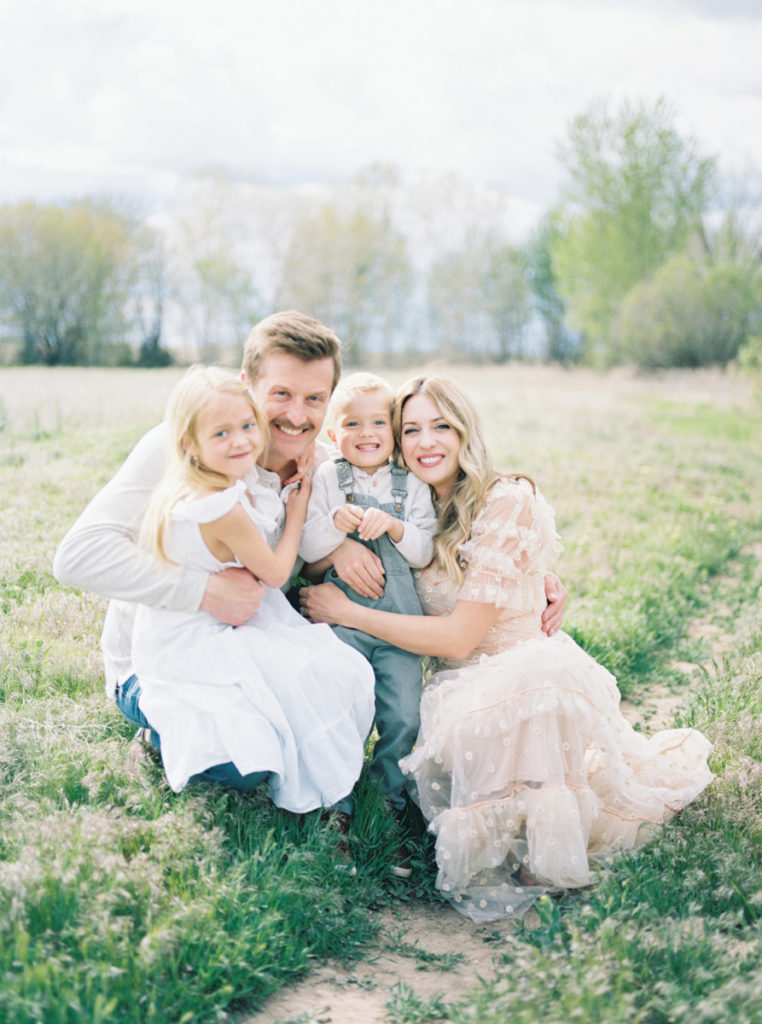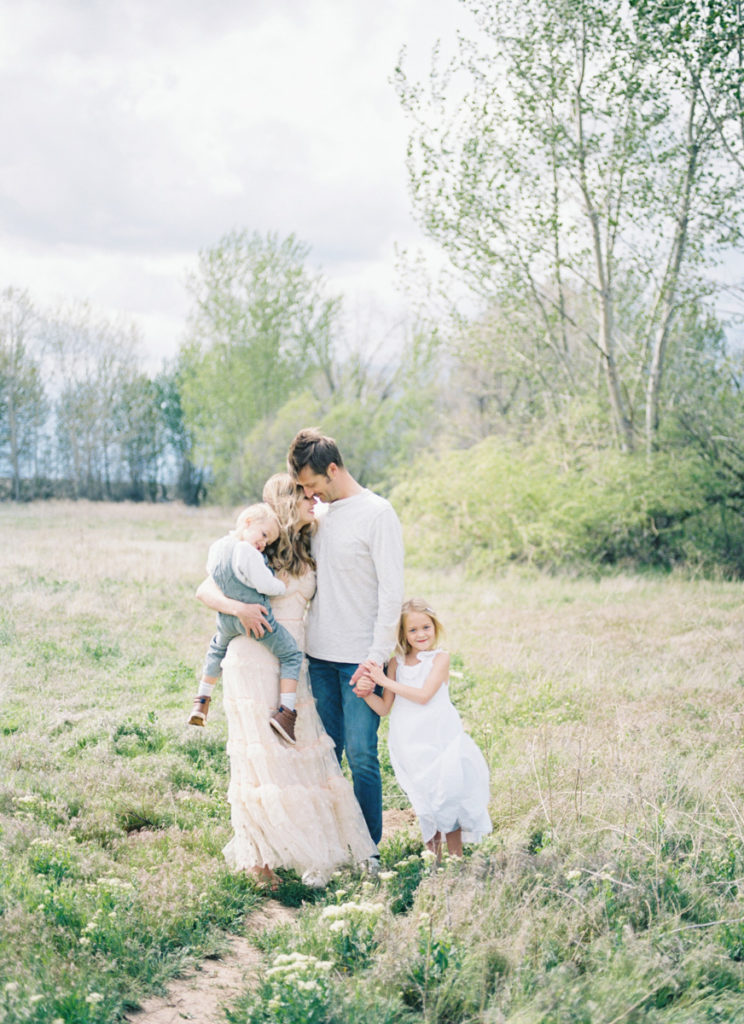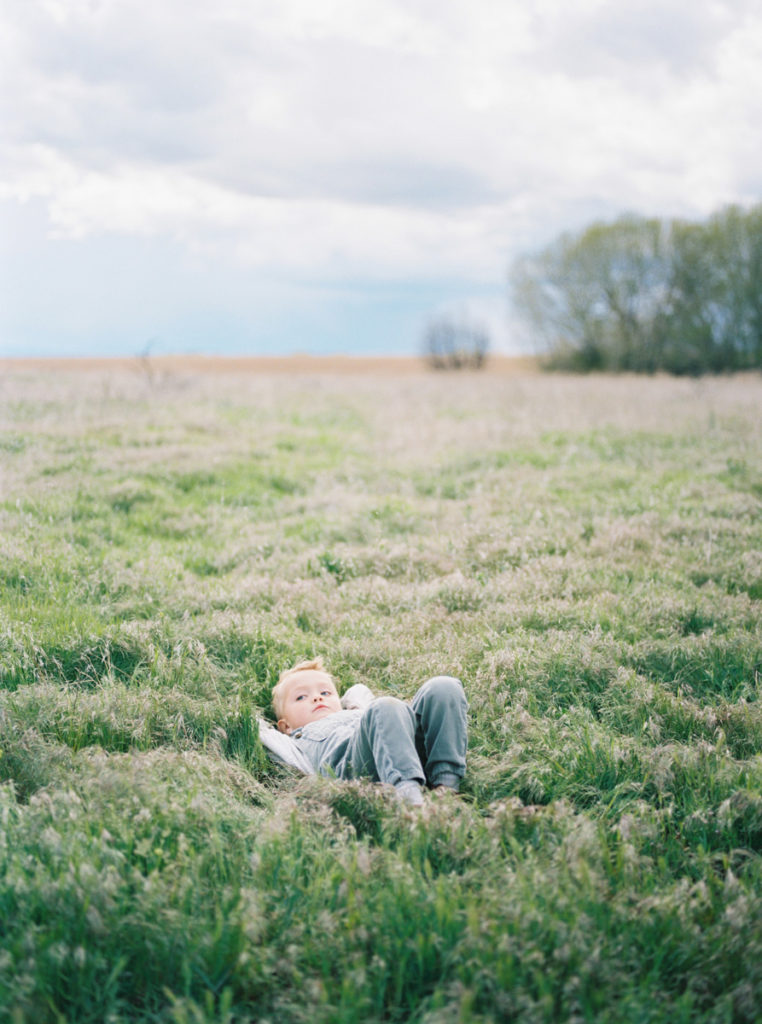Hybrid Photography: how to incorporate film into your family and newborn sessions.
This is an educational article for photographers about hybrid photography (shooting film and digital together). If you’re a client looking for a photographer, click here!


Hey, photographers! Today I’m diving in to the second half of my two part series on shooting film. Part one went over the pros and cons of both film and digital, as well as what made me choose to shoot hybrid. Today, part two is going to cover the ins and outs of actually shooting two different mediums during a session. And I’ll also break down the cost of shooting film, since it’s so important that you take the high cost into consideration as you develop your pricing. Making a profit is not something that usually gets done by accident. 😉
What hybrid photography looks like for me
At a full session, I generally shoot 1-3 rolls of film, often both medium format and 35mm (though this depends on the availability of 35mm film stocks that I enjoy shooting, which is hit or miss these days). This means I leave a session with anywhere between 16-72 film shots, depending on how many rolls I shot of each and how long my session was, and honestly how squirrelly the kids were or how much light I had available. I deliver the vast majority of my film photos – typically, you’ll find that when you’re shooting with intention, most frames are deliverable! It’s very different than shooting with digital, where you’re often taking multiple frames of very similar shots, sometimes to compensate for wild kids and other times just out of habit.
The percentage of film to digital images that make up each gallery I deliver varies quite a bit. If I’m working with a couple with no children or a sleepy newborn in a very well lit location, my gallery might have 50-75% film images. On the other hand, if I’m working with a family with multiple energetic children or a little one who is not happy during the session, or shooting in a darker home or other poorly lit setting, I may only be delivering about 10-20% film. Very rarely I will shoot an all-digital session, but it’s not my preference and I will never give a discount for not shooting film. I highly recommend never doing this! I have known of photographers who charge a separate fee to shoot film or discount for not using it, but ultimately our clients should be paying for our artistic skills and final product, and not be introduced to the ins and outs of our business costs. You don’t have to agree with this, but that’s my take.
And a last note on this point: even if I don’t shoot much film, my editing benefits enormously from me shooting some film. My clients never notice the difference between my film and digital – they just notice that their images look great. Again, it’s about the final product, not exactly how you arrive there!
The cost of film
In part one of this article, I went over the actual cost of film, and I’m talking about it again. It’s no secret that film is expensive! And keeping our overhead costs in control and charging profitably is outrageously important – after all, no matter how fun this job is, it’s a job. And personally, my income matters a lot to my family – but even if your income is 100% optional, you deserve to be running your business profitably!
Here’s what the cost of film looks like in practice. For example, if you were shooting a full family session, the number of rolls you would use varies, but you could easily shoot 5 medium format rolls (80 frames) and one 35mm roll (36 frames usually), for a total of 116 frames. The cost for that would be around $12/roll (cost depends on your film, where you buy, and format, but this is a reasonable average cost for this illustration). $12 times 6 rolls is $72 on the film itself. Then add $18/roll for processing, which adds up to $108. Already, the film cost is coming in at $180, not including tax, shipping, film price fluctuations, or the fact that it’s really easy to shoot more than that depending on the family you’re working with.
What I personally do is more likely shoot one 35mm roll and one medium format roll, which gives me 52 film frames (or two medium format rolls for 32 frames), and comes in at $60 (again, not including tax, shipping, etc.). I love this option because it saves me so much overhead, I don’t mind editing to match my scans, and I use film only when it really benefits me to use it, not when the costs begin to outweigh the benefits (as I talked about in part one).
Of course, there is absolutely no right or wrong on how much film you should shoot, and if you’re pricing yourself profitably then you can spend whatever you want on film each session! This is just *my personal preference* and why I’ve made the choices that I have.
When to choose film versus digital
I’ve been asked how I choose when to shoot film or digital during a session. The truth is, after shooting hybrid for several years, it’s essentially not even a conscious decision anymore, and it’s definitely not complicated!
When I first started incorporating film, I wasn’t confident about it at all (so if you’re not yet, I understand – it can feel intimidating!). I would generally “save” my film shots for a time when I knew I loved my setup and I wasn’t worried about someone moving too much. This approach is fine when starting out, and I knew I wasn’t taking the chance of missing any shots that I really wanted to give my clients. But it also meant that I often only shot one roll or less throughout an entire session, since I was nervous. Again, there’s no failure in that, and it’s a very valid way of venturing into shooting hybrid. But I was actually loving my film scans SO much and always felt a little bummed that I wasn’t shooting more film – which meant that I needed to get a little more bold. 🙂
Once I decided to not stress so much about messing up, I got comfortable really fast. Instead of worrying about the chance of ruining a film frame and making sure I had a digital copy of every setup, I reminded myself that my worst case scenario of missing a couple moments during a session was actually no big deal at all. Cute stuff happens in front of my camera throughout the entire session, and I never capture all of it! There will definitely be times when you miss a great shot – whether you’re shooting film or digital – and there’s no sense in worrying about it. It’s just part of the process, and a session is made up of so many great moments, not just one.
Though choosing film versus digital feels mostly subconscious these days, I know it doesn’t start out that way. So here are a couple things to consider when making that decision:
- Most important of all, what is your available light?
- Second, how squirrelly are your subjects?
I don’t want this to sound like you can’t shoot film in poorly lit homes or with wild kids, because you genuinely can. It just takes some intentionality. For me, this looks like the following:
- In a house with poor light, I stay very close to the windows, having my clients face them as much as possible. I also bring a reflector to direct a little light back into the shadows, as well as some continuous lighting that can help me out a bit (I’ll link my favorite products in a future post!). None of this makes a cloudy day look sunny, but it gives me workable light. You can also absolutely use a flash while shooting film, with great results! But that’s not my personal preference.
I also don’t expect a session like this to look like a brightly lit session, and I choose to embrace the lower, more contrast-y light available to me. And when subjects (typically toddlers) are moving quickly indoors, I just switch over to digital unless I’m purposefully capturing some motion blur.
- When I’m working with energetic children, film can be tricky even when outdoors on a sunny day – it’s not just the shutter speed that counts, but also the speed of my autofocus and the wide range of movement and expressions kids can deliver in less than two seconds. Ha!
That said, movement is often beautiful! On film and digital both. I am never trying to nail the “perfect” moment in my photos anyway (with the exception of a classic portrait), so oftentimes movement is welcome. But when kids hit a certain kind of mood, I know I need to be able to shoot away quickly in order to give their parents photos that they’ll love. Repeatedly asking kids to listen to you when they’re not in the mood can quickly make them grumpier, and it’s super important to me that my sessions feel very relaxed and happy. I know that I can deliver beautiful edits of my digital images, so instead of feeling constrained by wanting to use film, I will keep grumpy kids moving and exploring and ask as little of them as possible – and make sure parents know that I don’t need much time to get great photos. Digital is usually the winner for me in this situation.
- I also have to throw this out there: I don’t always like my film images better! Sometimes I’ll take a similar shot on digital, and get a better version of it. Or my available light is disappearing, and film works still but my digital just looks better. Don’t forget that an image isn’t better simply because it’s on film!
I’ve heard enough photographers tell me that they know they “should” be shooting more film, or something along those lines, and this is your permission to simply do things the way that you like. Film isn’t magic – it’s a great tool, and so is digital. Take your costs into consideration, and the pros and cons of each medium. From there, you can make an informed choice that serves you and your clients, and not feel that vague pressure to do things the way anybody else does them.
Remember that every photographer brings a different vision to the table. I know my style and the kinds of images that I want to give my clients, and the decision making process that I outlined above reflects my personal artistic priorities. But your decision making process may look different – and as long as it serves you and your clients well, then it’s perfect! No photographer needs to have the same process as another, and I hope that having some insight into mine simply gives you confidence in your own, whether it’s similar or super different. You bring so much to the table, and I would love to encourage and equip you to bring your own creations to life.
Happy shooting, friends! 🙂


Hybrid Photography | Incorporating film into your sessions, by Hannah Mann
P.S. I know that even with the right information in front of you, it can still feel really tricky to put it into practice. If you’re interested in learning more, I have all the resources you need! From my education shop, to mentorships, to group coaching and more in between, I promise to deliver education that is transformative: I’m here to equip you with the skills you need to thrive!
I have worked with so many photographers of all skill levels, and it is such a joy to me to help others make real changes in the way they shoot and the quality of the work they produce.
+ Comments